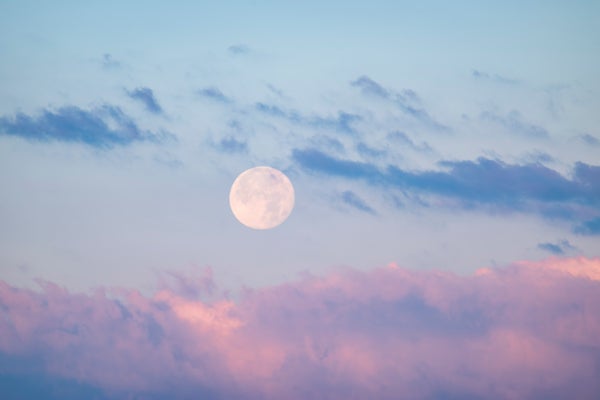How to See Stars, Satellites, and More in the Daytime Sky
It’s possible to see celestial objects during the day, but it’s not always easy
It seems pretty obvious that you can’t see any stars in the daytime.
If you were to say that to me, however, I would gently take you by the hand, lead you outside and—being an unrepentant smart aleck—silently point at the sun.
All joking aside, our nearest star is the reason we don’t see other stars during the day—well, part of the reason, the other being our atmosphere. Molecules in the air act like pinball bumpers, scattering solar photons in all directions. Because you’re surrounded by these molecules, you see sunlight coming at you from every direction in the sky. Earth’s air preferentially scatters bluer photons, so the sky appears blue.
On supporting science journalism
If you’re enjoying this article, consider supporting our award-winning journalism by subscribing. By purchasing a subscription you are helping to ensure the future of impactful stories about the discoveries and ideas shaping our world today.
And it’s also bright. Stars are pretty faint, so all that scattered light drowns them out. There’s just too much contrast; it’s like trying to hear a whisper at a heavy metal concert.
Scientifically speaking, though, being able to observe stars while the sun is up would be a great boon to astronomers. Some stars undergo rapid changes as they begin to die. For example, in 2019 and 2020 the red supergiant star Betelgeuse blasted out immense volumes of dust that dropped its visibility by more than half and had astronomers scrambling to understand the physical processes behind the event. But for months at a time Betelgeuse was effectively invisible, too close to the sun in the sky to be seen through the glare, and astronomers lost lots of valuable observing time. Many other celestial phenomena are similarly time-critical, which is why some astronomers have worked quite hard to find ways around the obstacle of Earth’s bright daytime sky.
Past attempts with professional-grade hardware include a 1981 experiment that linked an electronic device called a photometer (think of it as a very fancy light meter) with a one-meter infrared telescope in Chile to successfully make daytime observations. Another in 2007 used an off-the-shelf digital detector on a small refractor telescope to deliver remarkably decent photometric measurements, even for third-magnitude stars (which are somewhat fainter than those making up the Big Dipper). In general, measurements of stellar brightness can be done to about 1 percent accuracy during the day, but of course it works best for brighter stars.
Most recently, astronomers at Macquarie University in Australia successfully made such measurements using a test rig they call the Huntsman Telescope Pathfinder. The Pathfinder is a single commercial camera lens mated to a sophisticated but relatively inexpensive digital camera. It’s a test bed for the full Huntsman Telescope, which will consist of 10 such lenses working in tandem to take deep, wide-angle surveys of the sky. The equipment is normally used at night, of course, but the astronomers wanted to vet its daytime capabilities.
In daytime tests of the Pathfinder on 35 different stars of varying brightness and color when the sun was up to 30 degrees above the horizon, the astronomers were able to achieve a brightness measurement accuracy of 1 to 10 percent—which is pretty good, considering the inherent difficulties of the observations. Exposure times must be very short to avoid the bright sky saturating (overexposing) the detector, and then thousands of images must be taken to build up enough signal from the target star to be seen. The astronomers were able to detect stars as faint as magnitude 4.6, which is amazing; that’s not much brighter, for instance, than what you can see via unaided vision at a dark site.
They were also able to pull off another impressive feat: detecting and tracking the International Space Station (ISS) as it moved across the daylit sky. The ISS is one of the brightest artificial objects in the sky, but it moves rapidly and changes brightness dramatically—on the horizon it’s more than 1,000 kilometers away from an observer versus just a few hundred when overhead. Even so, the Pathfinder could resolve some structural features of the ISS as it passed overhead, including its huge solar panels and component modules.
These observations show that daylight observation of bright satellites and stars is possible even with a relatively simple rig; more sophisticated equipment would no doubt do better. Such observations could be very useful to track the ever-increasing number of satellites in Earth orbit, a critical aspect of space situational awareness.
But you need not have much equipment on hand to see astronomical objects during the day; it’s possible even by eye. The moon is the easiest because it’s the brightest thing in the sky besides the sun; when it’s near first quarter, for example, you can spot it rising in the east before sunset. Around third quarter you can see it in the morning setting in the west long after sunrise, too.
Venus is the third-brightest object in the sky. (The ISS can get brighter, as can some other satellites, but I’m not counting those because we made them.) When it’s an “evening star” in the west, Venus can be astonishingly bright—so brilliant that many people don’t believe it’s real and commonly mistake it for an airplane or even a UFO (or UAP).
Venus is bright enough to see when the sun is up, too. I’ve spotted it many times in broad daylight! The trick is to look for it when it’s near a celestial guidepost, the much brighter and larger crescent moon. Our natural satellite is far easier to see, and if you know where Venus is in relation to it, you can usually just perceive the planet against the brilliant blue sky. Planetarium software is useful here, and many planetarium apps are available for free on your mobile device.
Sometimes comets can be seen during the day as well; in 2007 Comet C/2006 P1 McNaught got so bright that I was able to spot it in broad daylight! That’s rare, but it’s pretty astounding when it happens.
And there is another way stars can become visible during the day: when they explode. A supernova is an unbelievably luminous event, and if one were to erupt in our galaxy, it could get extremely bright. Betelgeuse, for example, could get as bright as the full moon when it someday explodes, but because it’s so far away, it will appear as an eye-wateringly intense point of light in the sky easily visible during the day. The only problem is that we probably have to wait several hundred thousand years before Big B blows up. Hopefully some other Milky Way star will take it upon itself to go supernova—as long as it’s not too close.
Astronomers, however, are no longer limited to their eyes during the day. Being able to observe stars when the sun is up will be a big advantage. If there’s a downside, it’ll be having to adjust our sleeping schedules.

















.jpg?itok=F2C4uk0x)



Discussion about this post